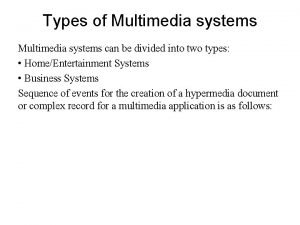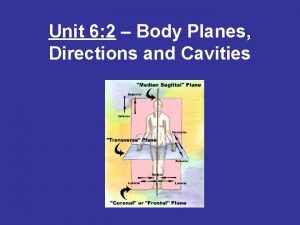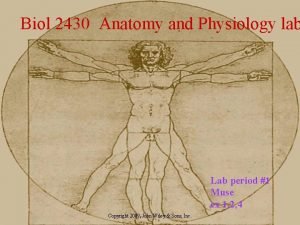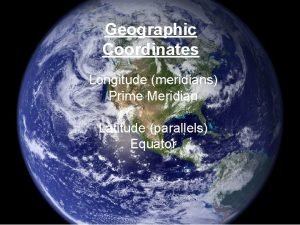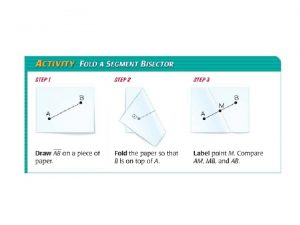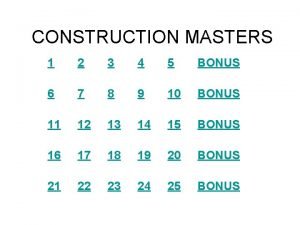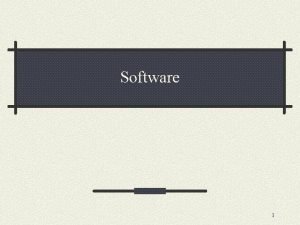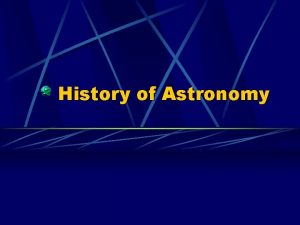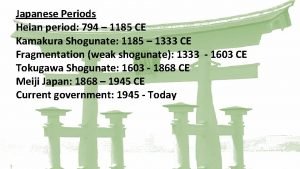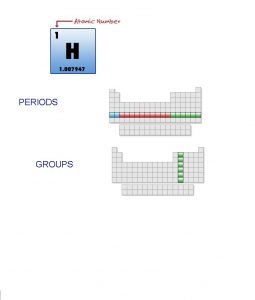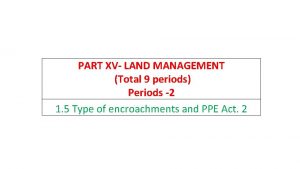Periods of Western Astronomy Western astronomy divides into











- Slides: 11

Periods of Western Astronomy § Western astronomy divides into 4 periods § Prehistoric (before 500 B. C. ) Cyclical motions of Sun, Moon and stars observed Time and directions develop § Classical (500 B. C. to A. D. 1400) Measurements of the heavens Geometry and models to explain motions

Periods of Western Astronomy § Renaissance (1400 to 1650) • Accumulation of data led to better models • Technology (the telescope) enters picture § Modern (1650 to present) • Physical laws and mathematical techniques • Technological advances accelerate

Who? § Early Ideas: Pythagoras (500 BC) § Earth was round Evidence: the sphere is the perfect shape used by the gods

Who? § Early Ideas: Aristotle (300 BC) § Earth is round: Evidence: Shape of Earth’s shadow on the Moon during an eclipse Evidence: Traveler moving south will see stars previously hidden by the southern horizon

Who? § Eratosthenes (276 -195 B. C. ) § made the first measurement of the Earth’s size § He obtained a value of 25, 000 miles for the circumference, a value very close to today’s value

Who? § Ptolemy of Alexandria (140 AD) § Geocentric model (earthcentered) Assumed: Each planet moved on a small circle, which in turn had its center move on a much larger circle centered on the Earth (epicycles) – explained retrograde motion § http: //www. youtube. com/watch? v=72 Fr. Zz_z. JFU

Who? § Nicolaus Copernicus (1473 -1543) § Heliocentric (sun-centered) models explain retrograde motion as a natural consequence of two planets (one being the Earth) passing each other § Relative distances of the planets from the Sun § BUT could not predict planet motion

Who? § Tycho Brahe (1546 -1601) § Made observations of a supernova and comets - the heavens were both changeable and more complex than previously believed § Designed and built more precise & accurate instruments § Made measurements of the planets – gathered data

Who? § Johannes Kepler (1571 -1630) § Tycho’s data passed to Kepler, his young assistant § Kepler derived his three laws One: Using Mars data, Kepler showed the orbit of planets to be an ellipse with the Sun at one foci Two: Planets will sweep out in equal distances in equal times Three: The farther the semi-major axis, the longer the orbit (a 3=p 2)

Who? § Galileo (1564 -1642) – house arrest! § Invent and use the telescope to observe space Found: The Moon’s surface has craters and is made of rock The Sun has spots, changes its appearance, and rotates Jupiter has four moons orbiting it Milky Ways has many stars

Who? § Isaac Newton (1642 -1727) - born the year Galileo died - CREEPY § Major advances in math (calculus), physics (motion/optics), and astronomy(gravity) Newton’s laws of motion and gravity
 Learning astronomy by doing astronomy activity 1 answers
Learning astronomy by doing astronomy activity 1 answers Learning astronomy by doing astronomy answers
Learning astronomy by doing astronomy answers Learning astronomy by doing astronomy activity 1 answers
Learning astronomy by doing astronomy activity 1 answers Two categories of multimedia
Two categories of multimedia Ventral plane
Ventral plane Ventral cavity
Ventral cavity Taxonomy in biology
Taxonomy in biology Coordinates
Coordinates Gummy bear anatomy lab
Gummy bear anatomy lab The point that divides a segment into two
The point that divides a segment into two To clarify any discrepancies in the plans use a
To clarify any discrepancies in the plans use a Computer software can be divided into how many parts
Computer software can be divided into how many parts



